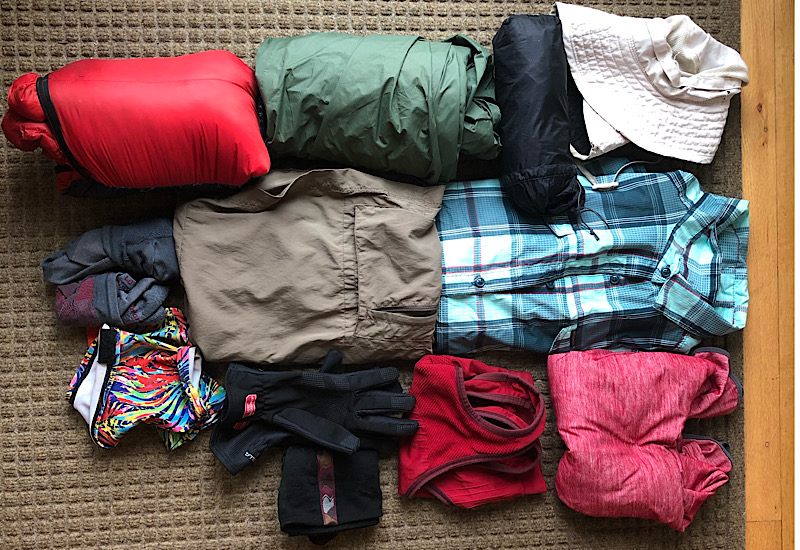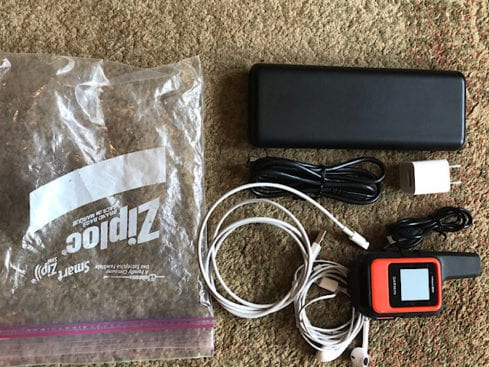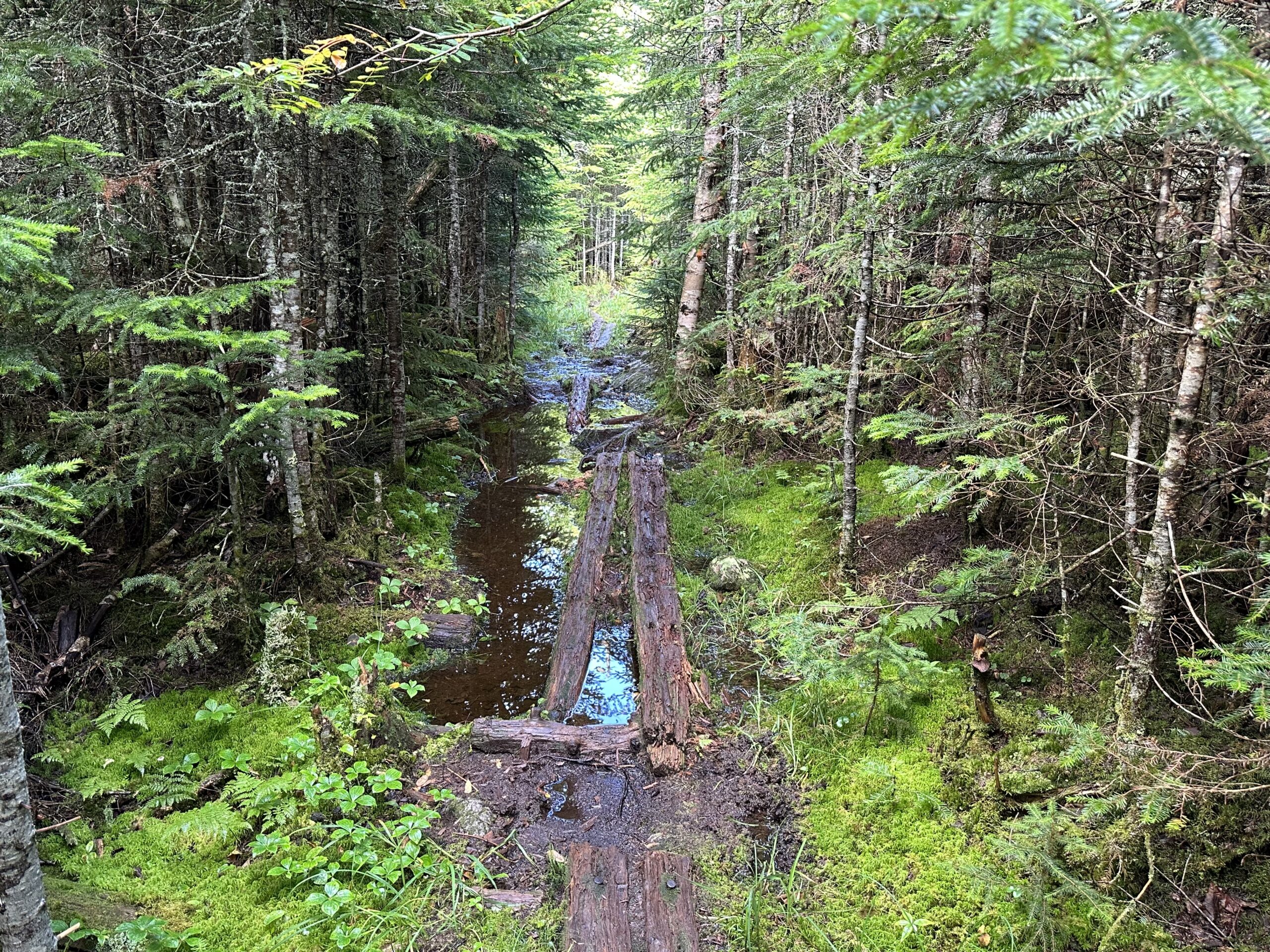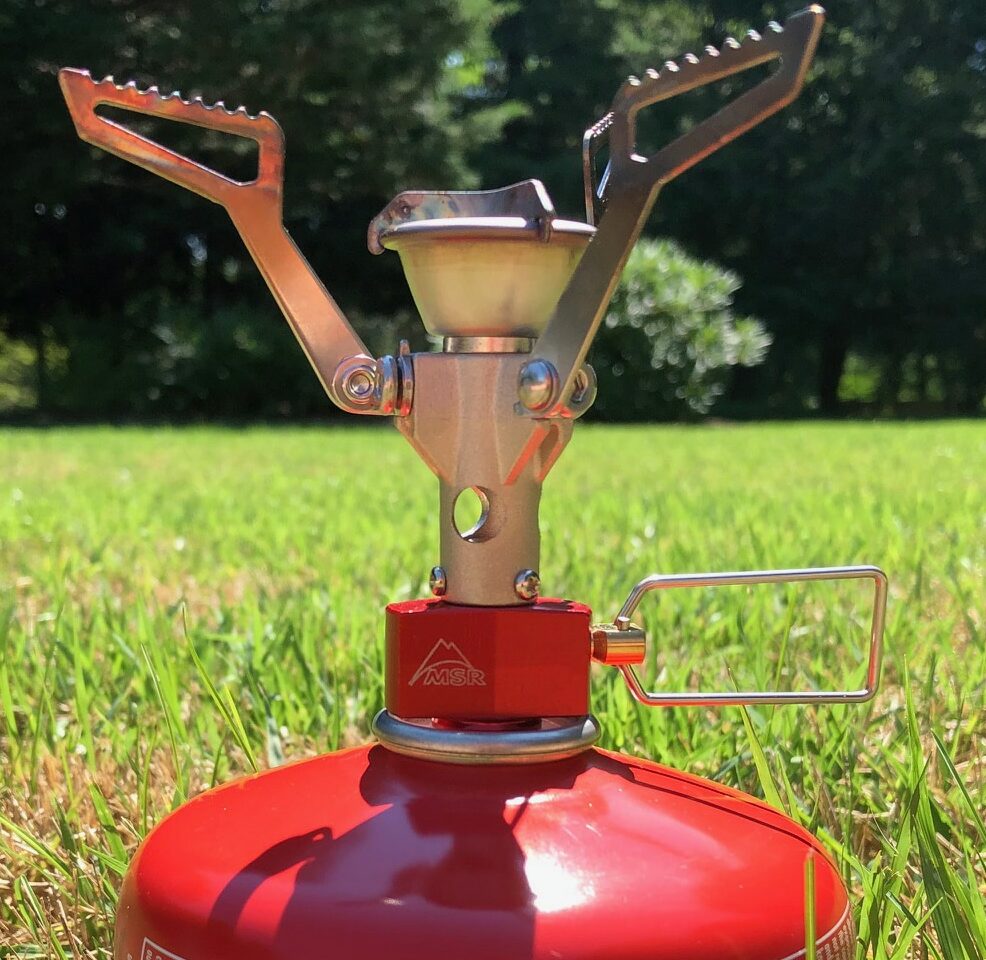My hiking Day Pack is always ready to go – my tiny “bug out” bag. The Day Pack stays tucked away in my hall closet next to the front door, ready for the next Zombie attack or last-minute hiking decision.
I try to keep my Day Pack light while balancing the need to hike safely. What goes in the Day Pack depends a lot on the time of year and location or terrain, but there is one thing (the real priority) that always goes in my Day Pack on hike day – a Bagel from Leo’s Deli.
If I am going to hike fast for 8-10 hours, I will indulge, and an Everything Bagel piled high with cream cheese and ham is my fuel of choice!
Checklist for My Day Pack
I’m not a checklist kind of person, but I use them for my hiking gear. Most of the things I carry are critical, so I want to ensure they are not forgotten. I also get excited when headed out and tend to rush a little. Only the Bagel is not on the list and has yet to be forgotten.
You can download my checklist below and make any changes to start your checklist.
My Hiking Day pack Itself
The Day Pack I use for hiking is a small North Face frame-less pack. I found it on sale for about $20. The Day Pack is a mixed breed – a large book bag combined with a lightweight backpack. It has large side pockets for my water bottles and good padding in the back to give it some rigidity. It also has a large front pocket with some cord across it in case I need to lash something to the pack – like maybe an ax or an ice chest (probably not).
Tip: The one item I keep at the bottom of my Day Pack that is not on the list is a large trash bag. I try not to hike when the forecast calls for downpours, but the mountains can make their own weather.
The Hiking Day Pack in Extremes
There are times when my North Face Day Pack is not enough. When I need a “beefier” Day Pack, I’ll switch to a lightweight backpack with no frame. In this case, I use my Gossamer Gear frame-less pack. It has a lot more capacity and mostly get’s used when my non-hiking companions neither have a Day Pack nor want to carry anything.
I’m usually so excited to share my adventure for the day that I forget how much fun I had being “Mule” the last time.
Hiking at Higher Elevations
The higher I climb, the less predictable the weather becomes. In higher altitude environments, I generally carry an extra insulated layer, which is often a fleece pullover to go with my wind shirt. I also carry both sets of gloves and a heavier beanie. Bad weather and cold air can move in fast!
Extra food and water are also common if I plan to go above 5,000 feet. Water is sometimes harder to find, and my appetite definitely increases at higher altitudes. The hikes are also typically longer, so I’ll take a couple of extra snacks.
Hiking in Remote Areas or Dense Forest
When hiking in remote areas or with dense forests and undergrowth, I carry an extra layer, especially if I’m unfamiliar with the area. I have been hiking for a long time, and I am not ashamed to admit that I was “misplaced” on occasion in the past.
I also carry an InReach locator device on these hikes. This is mostly for peace of mind for my family, but as I’ve gotten older, the device has given me more confidence when tackling harder hikes. I used to think I was indestructible. That belief is gone, and knowing I can call for assistance if needed allows me more freedom.
Safety
Safety has also become more important for me as I have matured. I provide someone with my starting and ending locations. I typically give them the Google coordinates for the trailheads, if available, and leave a map of where I anticipate hiking. An estimate for completing the hike is also important, along with a stretch time or a time I absolutely expect to be finished.
Hiking Day Pack Clothing

- Wind Shirt/Fleece Pullover – I always carry this and often hike in cooler temperatures. I prefer fleece. It is lighter and regulates my temperature better when moving fast.
- Rain Jacket – I use the Lightheart jacket in warmer temperatures and the Men’s Marmot Precip in colder temperatures or when long-distance hiking. Sometimes I carry it instead of a wind shirt or fleece pullover. It makes a good wind blocker and is a more durable rain jacket.
- Rain Pants – I have an older pair of ultra-light pants from Montbell. I don’t think Montbell makes them anymore. They are about 3-4 ounces; I use them for rain and wind protection if it gets cold.
- Beanie – I carry my Yak Wool Kora Beanie I got for Christmas. It has performed well, and I’ve been pleased with how warm it keeps my head, considering it’s lightweight.
- Gloves – A pair of generic fleece gloves. I use these under my liners when it’s really cold.
- Glove Liners – I found a generic brand of waterproof glove liners on sale at REI. I mostly use them if it is cold, so I don’t always carry them in the summer. I also have a pair of Mountain Laurel Design Mitts, which I use over my winter gloves.
Clothing Accessories
- Bandanna (2) – I either wear or carry one.
- Sunglasses – I don’t wear these below treeline much unless at higher elevations where the woods are not as dense. They are prescriptions and backups for my glasses. Hopefully, I will never lose my glasses at night.
- Umbrella – I have a little Silver Shadow Mini I pack if desert hiking.
Hiking Day Pack First Aid Kit / Care Items
My first aid kit is basic, and every hiker is different. Everyone has a certain comfort level when hiking and should carry the first aid supplies they feel are necessary. Again, it much depends on where I’m hiking, but more often than not, it is on established trails in the northeast.
- Band-aids – I am a blister magnet, so I always carry these. If I feel a hot spot, I apply them immediately to prevent blisters.
- Neosporin – an essential antibiotic cream. According to some people, I only need that and Windex for all ailments.
- Ibuprofen/Tylenol – I don’t need this much anymore, but I always take a little.
- Several small bandages
- Nexcare Tape – This is the best I’ve found so far for damp or sweaty feet when I need the bandages to stay in place. It is also flexible and pliable, making it suitable for those odd angles.
- Benadryl – Something always bites me, which can be a problem if there is a lot of swelling. I had a spider bit my foot on a break once, and I could not get my shoe back on my foot.
Preventative Care
- Chap-stick – I make sure mine also has sunblock in it. I find they get burnt as much as they get chapped. Sunblock 50 or greater works best.
- Sunblock is a tiny tube since I usually put it on before leaving if I need it. I don’t like wearing it much since the bugs also seem to enjoy me even more when I do wear it.
- Insect Repellent – All bugs love me, so I use DEET. It melts some of my clothing and plastics but not my skin, so it works for me. There are other options, including all-natural, so try them out and find what works for you. The hope is always that DEET is the last resort.
Note: I don’t carry larger bandages for breaks since I carry two bandannas.
Hiking Day Pack Electronics

- Phone – I use my iPhone for everyday tasks and often as my camera, which is now a normal phone task. I also use the GAIA GPS application to download GPX track files. The phone’s camera is also suitable for scanning the QR barcodes that some trailheads have available. You can usually get maps and trail updates from these.
- Headlamp – I have a new Fenix HM50R Rechargeable headlamp. This is another reason I carry the Anker Battery Pack. It is a great lightweight little headlamp I can use as a flashlight if needed.
Hiking Day Pack Other Items
- Toilet Paper – Surprisingly, I don’t see this on many Day Pack hiking lists. I can’t imagine not taking this necessity. Remember to practice LNT!
- Ziploc Bag – I always take one to carry out any trash.
- Emergency Blanket – I carry the lightest one I can find for emergencies. It is a simple 2 oz. Mylar blanket that I believe I purchased from Amazon.
- Knife – I still have the original Gerber I used on my first backpacking trip. It is definitely not ultra-light, but it has come in handy and now has sentimental value.
- Lighter – a tiny Bic lighter.
- Maps – if needed, but not much on Northeast trails. My phone is usually fine.
- Compass – I always carry one. Even with my GPS, there have been times when I used it to determine a general direction, like in a dense fog.
- Snacks – I usually carry a few bars. They are rarely eaten since Leo’s bagel sticks with me for a while. Some might even be a couple of years old. They probably taste the same as when they were new.
Hydration
- Water Bottles – I carry two Smart water bottles with about the same amount of water in each one to balance my pack.
- Water Filter – I’ll admit I don’t always filter my water. This is a personal preference, and I never recommend that others do the same. I’ve learned where to filter and not to filter and have possibly built up some resistance. I had Giardia when I was young but have not had it in years. When I do carry a filter, I carry my Sawyer Squeeze filter.
- Water Dipper – I cut off the bottom of a slightly larger Poland Spring bottle that one of the Smart bottles rests in while hiking. The bottle bottom is for dipping from sources where the full-size bottles won’t fit. If desert hiking, I also carry a long string or cord for lowering the dipper into tanks. It has one small hole at the top of each side.



